
This week in our series on walking the streets of central Kyoto we pick up from Kodai-Ji temple and continue north-west to explore the Gion district.
Yasaka Shrine is at the eastern end of Shijo (Fourth Street) and is the major shrine of the Gion Geisha district. Being right in central Kyoto and the gateway to Maruyama Park we usually end up here several times during any stay. There are plenty of restaurants, traditional tea shops and a Starbucks at this end of Shijo so it’s a good spot to refresh and people watch for a while if that’s your thing.
Just up Shijo to the left, when heading away from the Shrine, you can detour off into the Gion geisha district of Hanami-koji and to the right the Shirakawa canal area so I’ll include those here in this post too.
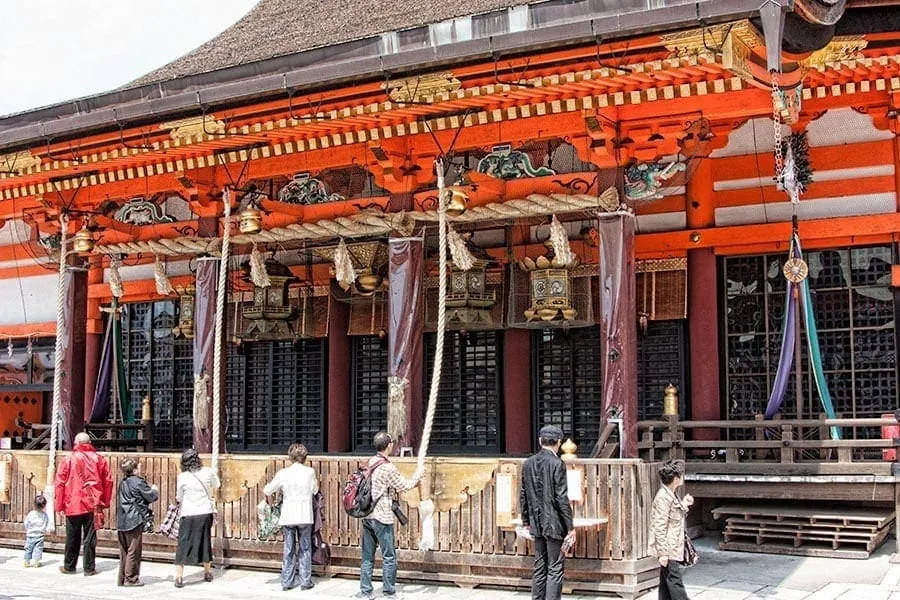
Yasaka Shrine was originally called the Gion Shrine. It was established in 656 in the second year of the reign of Emperor Seimei, around 150 years before Kyoto (Heian) became the capital. Yasaka is still an important shrine in modern Japan with around 3000 sub-shrines located around the country.
Amaterasu-Omikami (deities of the heaven) and Susanoo-no-Mikoto (deities of Japan) are the Kami enshrined here. In the photo above you can see the worshipers in front of the shrine pulling on ropes that ring the bell to attract the Kami’s attention before they make their prayers.
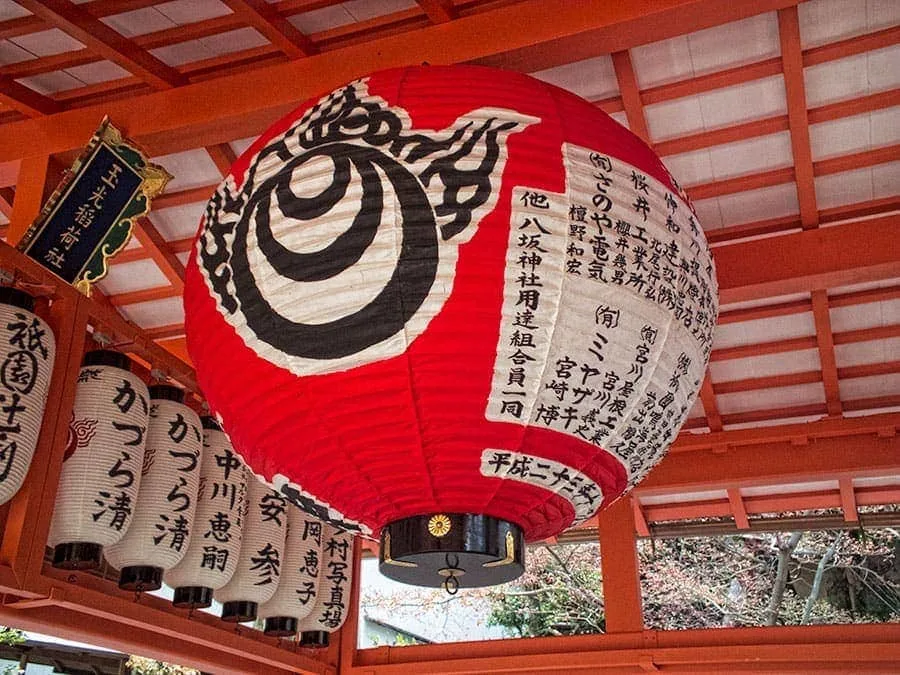
If you’re a little uncomfortable or uncertain about visiting a Shinto Shrine I’ve linked to an article that includes the various tips we have been given and picked up on our trips along the way that might be helpful.
Setsubun Festivities at Yasaka Shrine
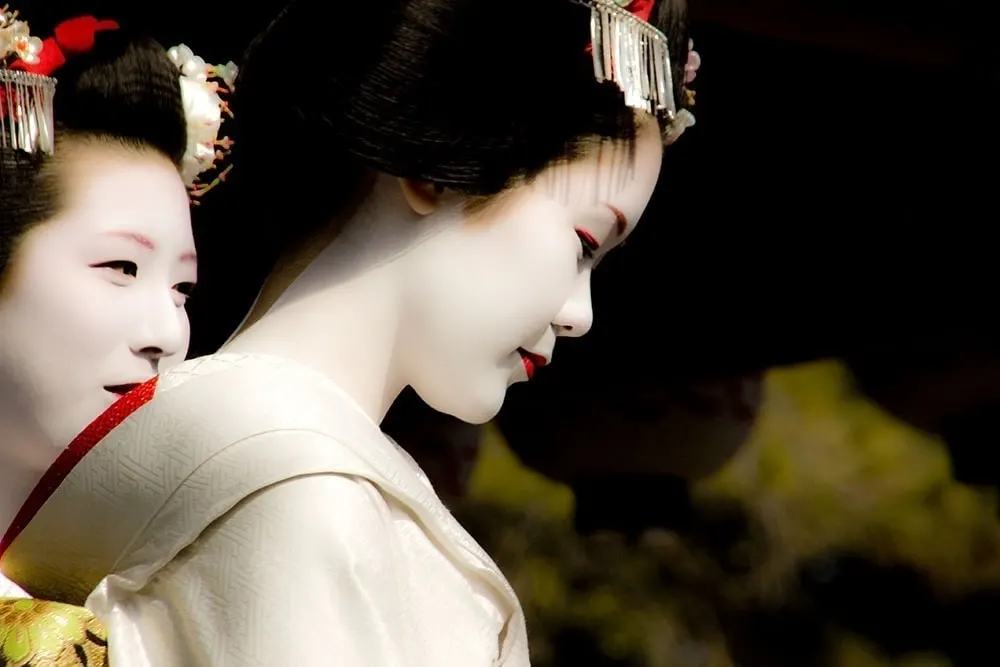
Yasaka is a major shrine and has many festivals throughout the year. One we really enjoy attending here is Setsubun which is the beginning of spring by the Japanese lunar calendar.
It’s a celebration that involves spring cleaning the home, huge sushi rolls, people in Shrines throwing soybeans at you and various pantomimes featuring ogres. Just your average day really!
Read more: Geisha perform for Setsubun in Kyoto and more information about the Setsubun celebration
Yasaka Shrine has a long association with the local geisha community and because of that one of the unique things that take place here on Setsubun Eve (2nd February) and Setsubun (3rd February) is the dance performances by Maiko from Kyotos various flower and willow districts.
They are held on the main stage throughout both days with the priests, shrine maidens and sometimes other local VIPs joining them periodically.
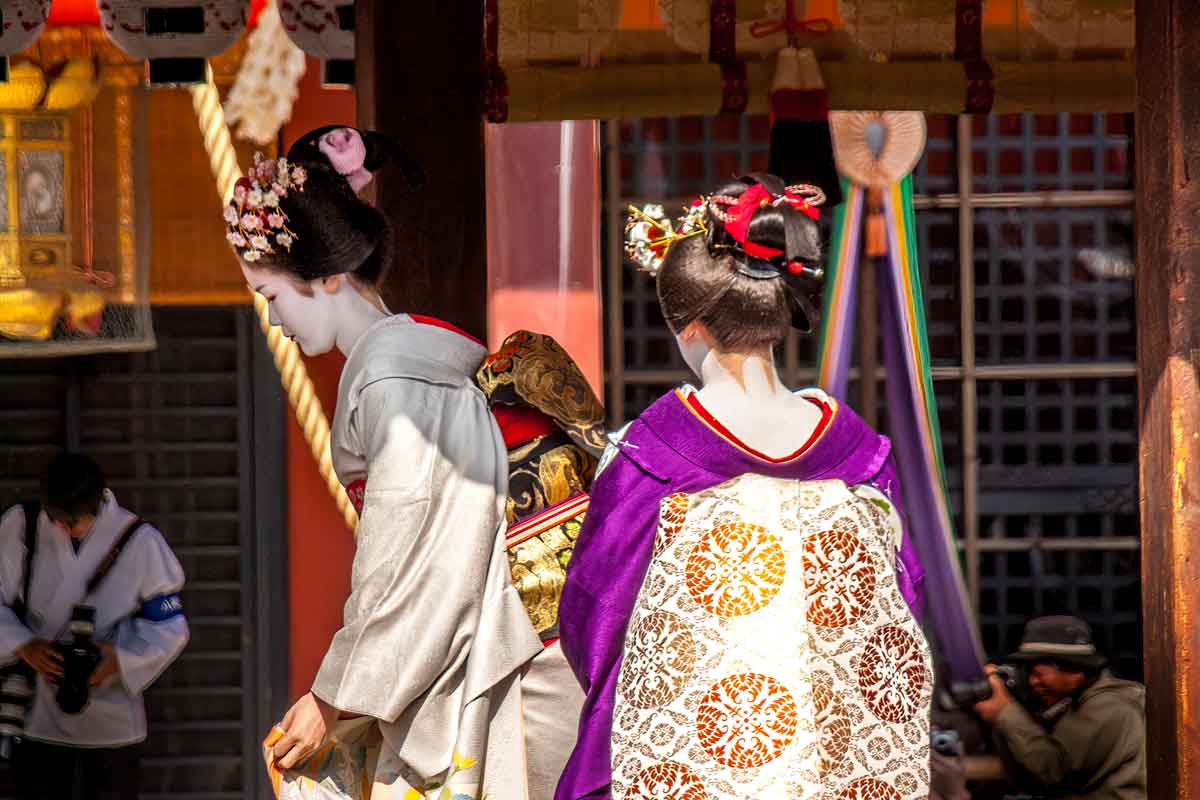
Maruyama Park
Maruyama-Koen (park) is tucked in behind the Yasaka Shrine and is a popular gathering place. It’s especially busy during Sakura when its many cherry trees are in bloom. The most famous is the weeping cherry tree (pictured below). It’s known as “Gion-no-Yozakura” or the nighttime cherry of Gion and despite being over 70 years old it still puts on a stunning display.
During spring blossoms all kinds of festival food can be bought and enjoyed beneath the pretty pink sakura petals and many families and groups bring their own blue tarpaulins and picnics to spend the day, staying on well into the evening in the park. This park converted me to toffee strawberries (naughty) and fed my obsession with Takoyaki (very naughty) – like festival food anywhere in the world it’s not for the super healthy eater but is a wonderful treat and part of experiencing the local events.
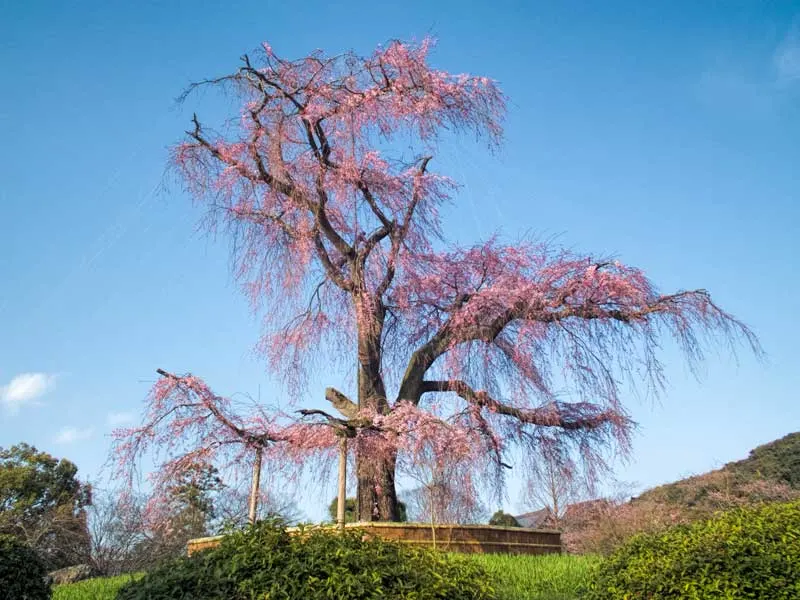
Until 300 years ago the area was pretty much deserted, covered in scrub and weeds. In 1886 it was designated as a park and work started to enlarge and beautify it. In 1913 Jihei Ogawa, a well-known garden designer who had previously worked on prestigious projects nearby such as Heian Shrine redesigned it creating the structure that is in place today.
The garden is a fairly typical Japanese design known as a Kaiyu, or walking around the pond layout. It provides a green space for residents and workers in the area and a gathering place for events and festivals.
You’ll find Maruyama Park on our list of great spots to visit during cherry blossom in Kyoto.
Gion Geisha District
The Gion Geisha district is arguably the most famous in all of Japan. It includes all the areas in front of the Yasaka shrine; both to the right and left of Shijo.
The Hanami-koji area which runs left from the intersection of Shijo and Kawabata Dori is a beautifully preserved historical district and in the back streets through here is one of your best chances to spot a Geiko or Maiko heading off for their evening’s work.
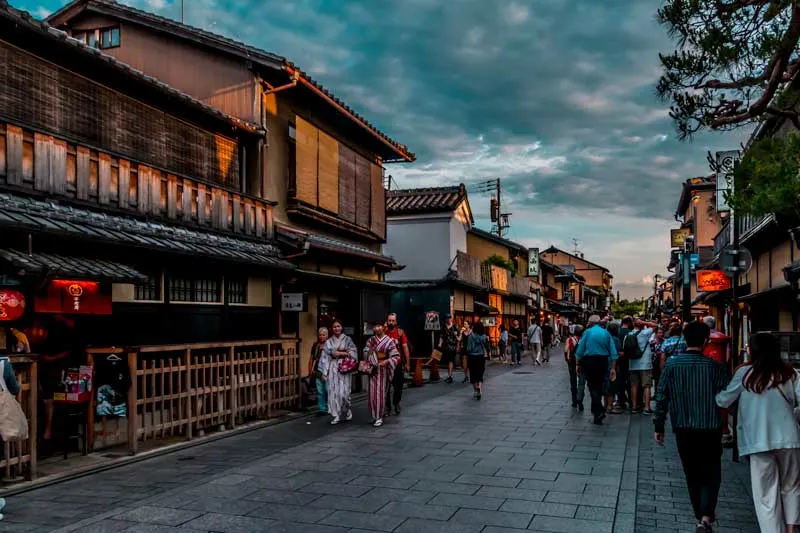
If you are lucky enough to spot a Geisha in full kimono they are working and the city asks you to be respectful and make way for them to pass. They’ll usually be moving purposefully between one engagement and another and no one wants to be late for an important meeting.
There are relatively few Geisha still working in Japan and it’s far more likely if you spot someone dressed as a Maiko on the street that you’re seeing someone who has paid to be dressed and made-up in a similar style for fun or a photoshoot. Generally, the quality of the kimono, the lack of the house crest on the obi, out-of-season hair ornaments like cherry blossom or wisteria in autumn and their geta or shoes will make it easy to spot the difference.
You will see the cobbled streets, traditional homes and tea houses throughout this area. Many have been converted into restaurants but the traditional facade remains in place. This area runs back south to the Gion Theatre, home to the Miyako Odori spring dance and to the Kennin-Ji temple.
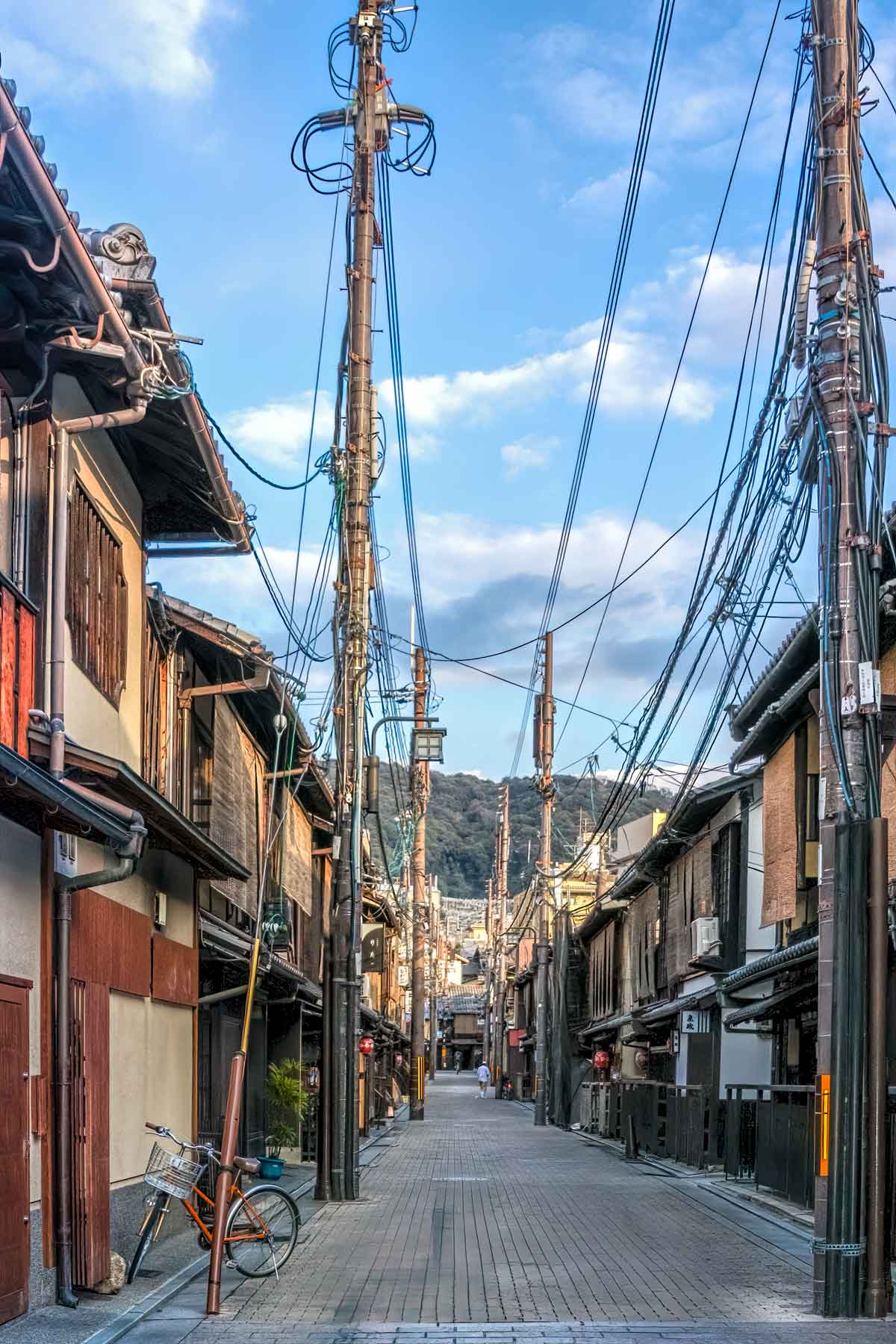
Shirakawa Canal
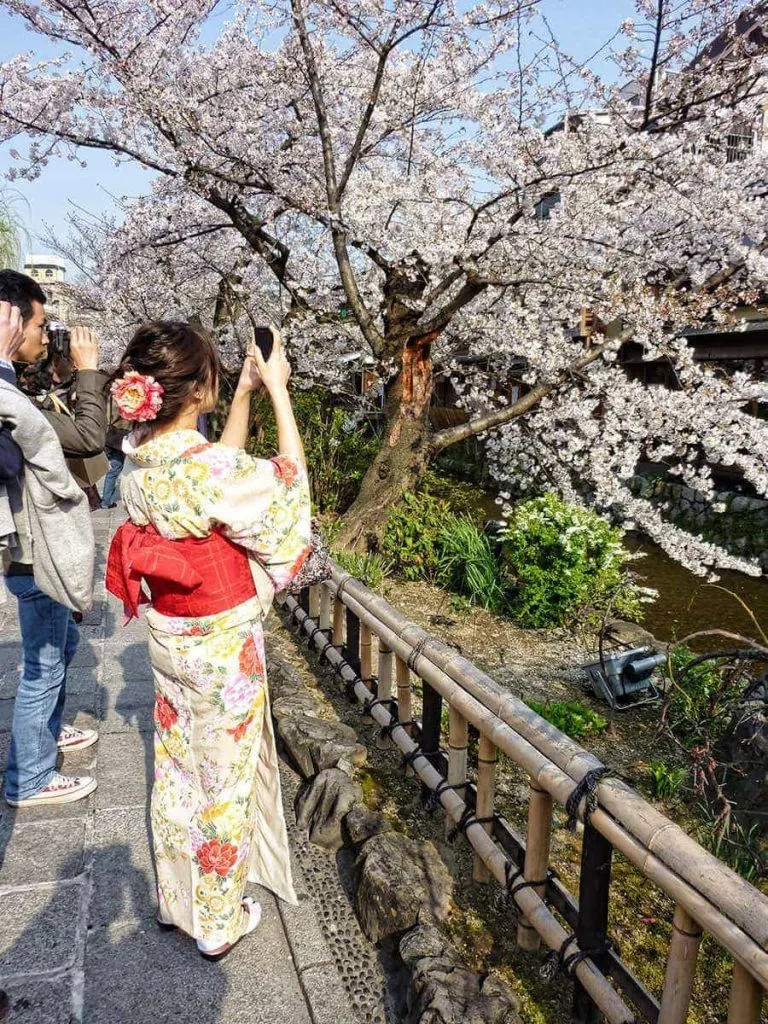

The Shirakawa Canal is about 5 minutes north of the Gion main street, just up from Shijo and is well worth a look particularly if (a) you’re there during cherry blossom season or (b) you are a long-time fan of the book ‘Memoirs of a Geisha’.
Several hints in the (fictional) book indicate it was based in this area including references to the famous Geiko, Mineko Iwasaki, who lived just moments from here. Iwasaki-san was interviewed by Arthur Golden as background for the book but he was sued and settled with her for breaching confidentiality when her name appeared in the book’s acknowledgement and parallels to aspects of her life appeared directly in the book.
It’s a very pretty area and well worth a walk through either by day or when illuminated in the evenings. Kyoto, like most of Japan, is extremely safe. We have no concern walking around the city after dark on our visits to the city spread over more than a decade.
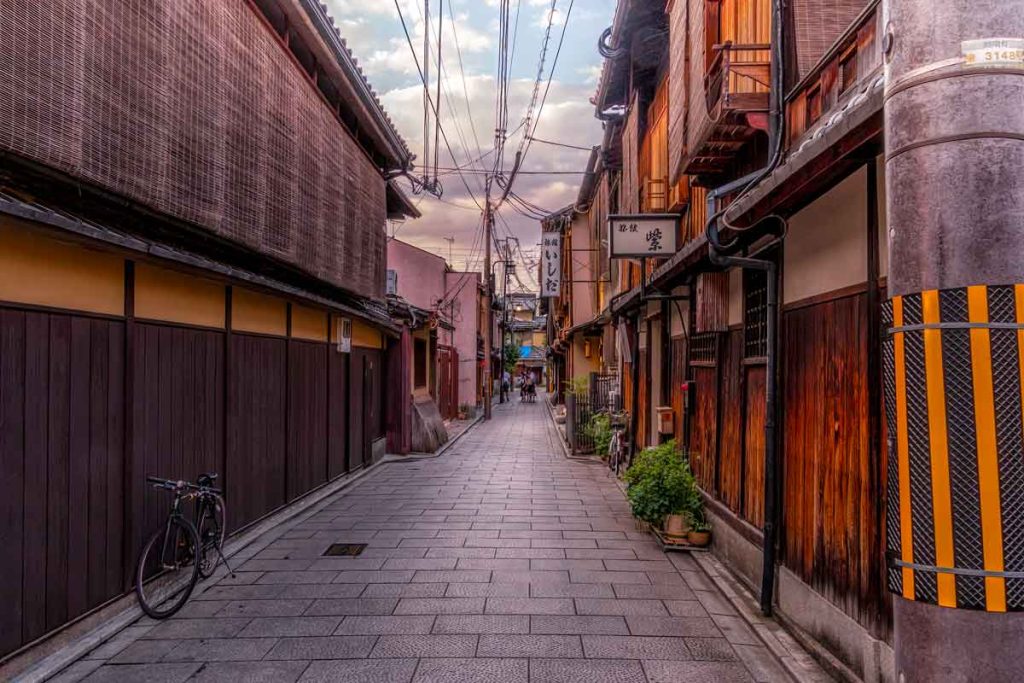
If you are interested in exploring Kyoto on foot you might also enjoy our self-guided central Kyoto walking tour.
@ChristineSalins (FoodWineTravel)
Wednesday 19th of November 2014
I love Kyoto. It's probably my favourite Japanese city. Lovely photos.
twoaussietravellers@yahoo.com
Friday 21st of November 2014
Thanks Christine! I do love travelling around Japan but no matter how many times I stay in Kyoto I find it hard to leave and can't wait to get back.